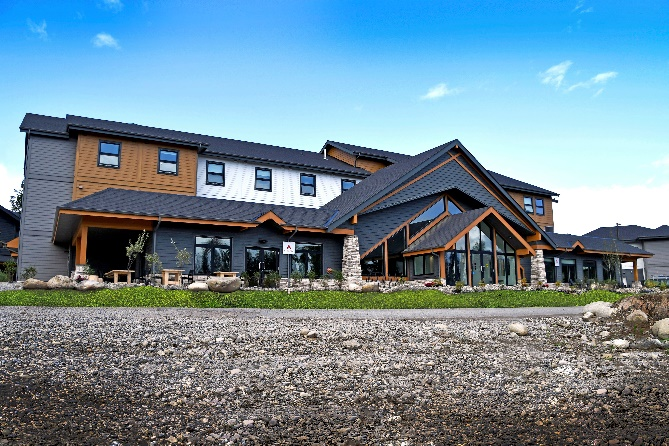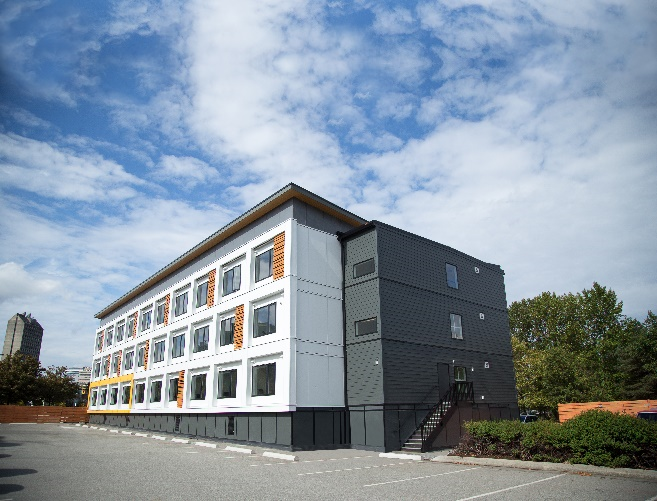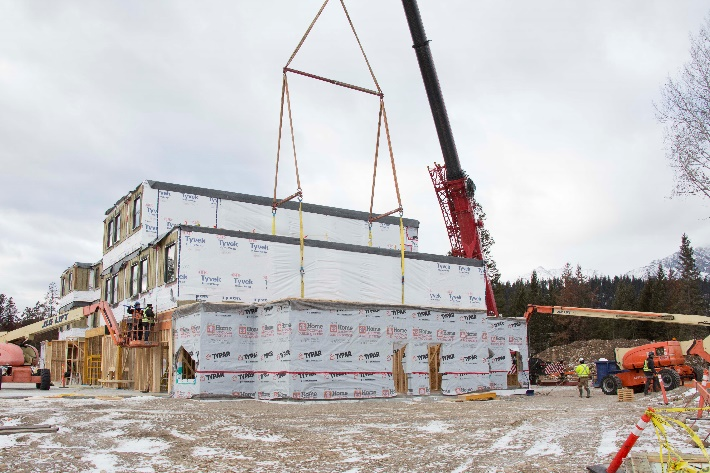Modular Construction – The Perfect Fit for Affordable Housing

Each night in Ontario, 12,000 people find themselves homeless. Across Canada, that number is 30,000. These individuals are in desperate need of housing, but the need for affordable solutions goes even further – to students, seniors, Indigenous communities and families who are simply priced out of their local market.
In Ontario, ONPHA and the Co-operative Housing Federation of Canada (Ontario Region) estimate that 69,000 affordable rental homes will be needed over the next 10 years – 29,000 homes to eliminate the current backlog of supply, and 4,000 homes per year to address new individuals entering the housing market. 30,000 supportive housing units will be needed as well.
How do governments, institutions, non-profit housing providers, businesses and communities come together to effectively close the existing gaps and ensure a healthy affordable housing supply?

What is modular construction
In Europe, modular construction has been a tried and tested method of building for decades. While less familiar in the United States and Canada, it is growing in popularity, with a larger percentage of buildings being constructed off site every year.
The innovative process involves manufacturing sections of a building off-site in a temperature-controlled facility. Those modules are then transported to their final site, set on the foundation footprint by crane, and joined together to make one integrated building. Once the modules are assembled and the integration is complete, the structure is virtually indistinguishable from those built by traditional construction methods.

The benefits of modular construction
While modular construction companies serve a wide variety of industries, it is in applications like affordable housing where the benefits are most apparent.
- Reduced construction timelines: Manufacturing the modules off site while foundational work occurs concurrently allows the construction timeframe to be reduced by up to 50 per cent.
- Cost and schedule certainty: Reducing, if not eliminating, the opportunities for untimely delays caused by weather, site damage, or lack of trade availability creates certainty of budget and project scheduling.
- Quality: A high quality structure is assured by building indoors in an environment of strict, factory-style controls and away from elements that may degrade materials.
- Sustainability: Waste is significantly reduced, from about 30 per cent on a typical construction site to 2 to 3 per cent in the manufacturing setting. The on-site footprint is also significantly reduced, with less noise, dust and traffic over a shorter period of time.

Applications for affordable housing
For stakeholders in affordable housing, the most appealing benefit of modular construction is no doubt the dramatically reduced timelines for building. Speeding up the traditional timeline by up to 50 per cent allows developers and communities to address urgent housing needs with rapid response capabilities.
Modular construction also presents flexibility in the approach to building. Both permanent and temporary structures are finding a place in solving issues of affordable housing supply, with temporary solutions offering the opportunity to use land that has been marked for future uses or that cannot accommodate permanent foundations to address pressing housing needs. Those structures can remain in place for years or be disassembled and redeployed to a different location on an identified timeline.

In British Columbia, modular buildings are changing the landscape of affordable housing. Over the past two years, the provincial government has committed significant funds to solving the housing crisis in partnership with non-profit providers and other stakeholders. NRB and Horizon North are playing a key role with our modular building solutions. Dozens of projects across the affordable housing continuum, including supportive housing, senior housing, and affordable market rentals, have been built by NRB across BC, providing more than 1,300 units of housing to individuals and families in need of an affordable place to live.
The importance of a home cannot be overstated. For many residents, affordable housing offers a new chance at life, an opportunity to be part of a community, and the foundation needed to live the life they want. Modular construction can play a key role in addressing community needs across Ontario and Canada. With the growing conversation and interest in affordable housing, there is an opportunity for the vision of every Canadian having a safe place to call home to become a reality.





